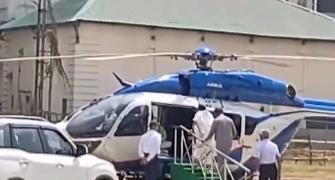In what can be termed as a major breakthrough, Delhi University has developed a technology to wipe out dangerous weed Lantana Camara, which has created havoc across the country.
Lantana Camara is a toxic plant and has the potential to kill the native plants where it grows. Though the plant produces fruits and flowers, they are hardly of any use for human beings or animals. Its fruits are consumed by a variety of birds who act as catalysts in spreading the weed.
The technology prescribes cutting the plant from its roots and removing the Coppising zone, which is normally buried inside the soil and is very crucial for the weed's life.
"The plant has to be cut in a manner so that its Coppising zone is removed from inside the soil. Then the uprooted plant should be put upside down for a few days, so that it will be dead," Prof Emeritus C R Babu, the director of the project told PTI.
The plant, which is originally seen in South America, was introduced as an ornament plant in India by the Portugese in early 19th century. It later spread into the barren lands in tropical forests, sea coasts, high altitude areas, dry lands, railway tracks and many more areas.
"The most dangerous thing about the plant is that it removes the native plants and replaces the bio-diversity. It also changes the soil's characteristic features," he said.
"Its spread needs to be checked otherwise it will change the moisture level in the soil and cause an entire habitat transformation. The weed produces a large amount of toxic element," Babu said.
The use of chemicals to kill the weed is not desirable, since it could damage the soil. The only way is to uproot it or cut it from the ground removing its Coppising zone, he said.
The Forest department of Uttaranchal has already used this technology and was able to restore 1,000 hectares of land recently, he said, adding that different state governments had envinced interest to use the technology. The CEMDE was conducting the field test at a place near to Puruna Pani in Orissa.
The Centre for Environment Management of Degraded Ecosystem under the School of Environment Studies in Delhi University made the discovery after a three-year-long research into the area.







